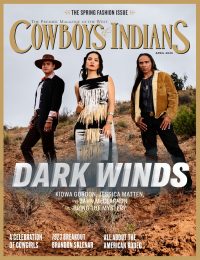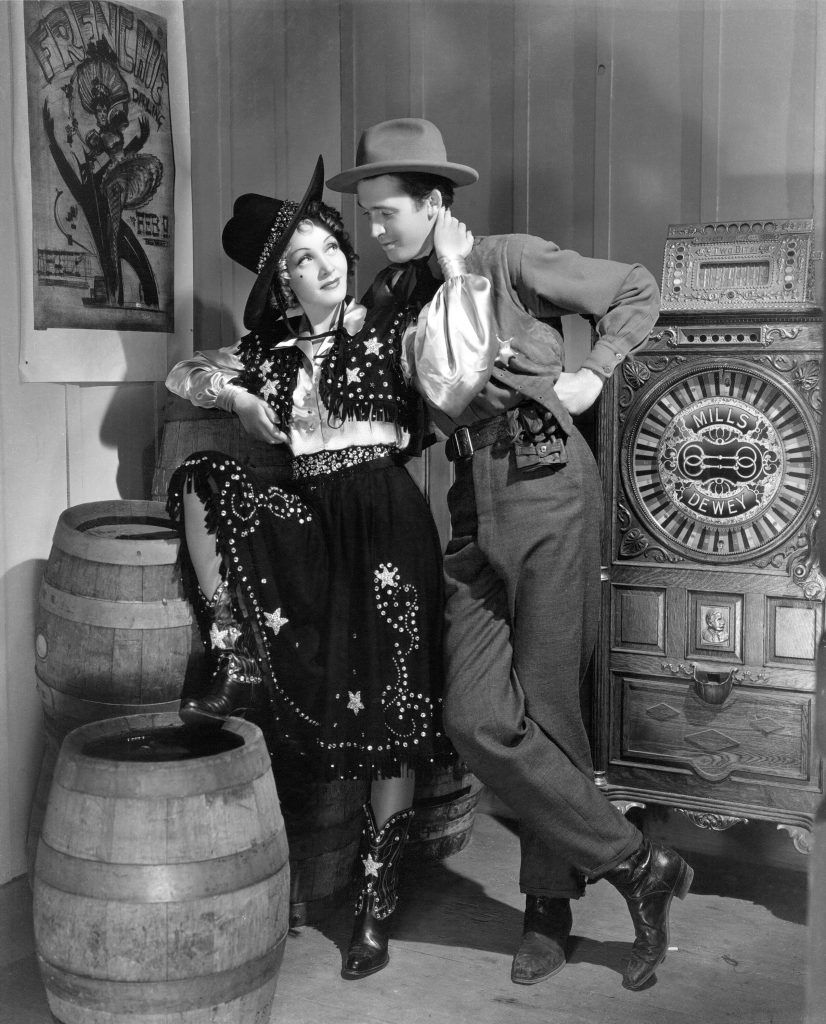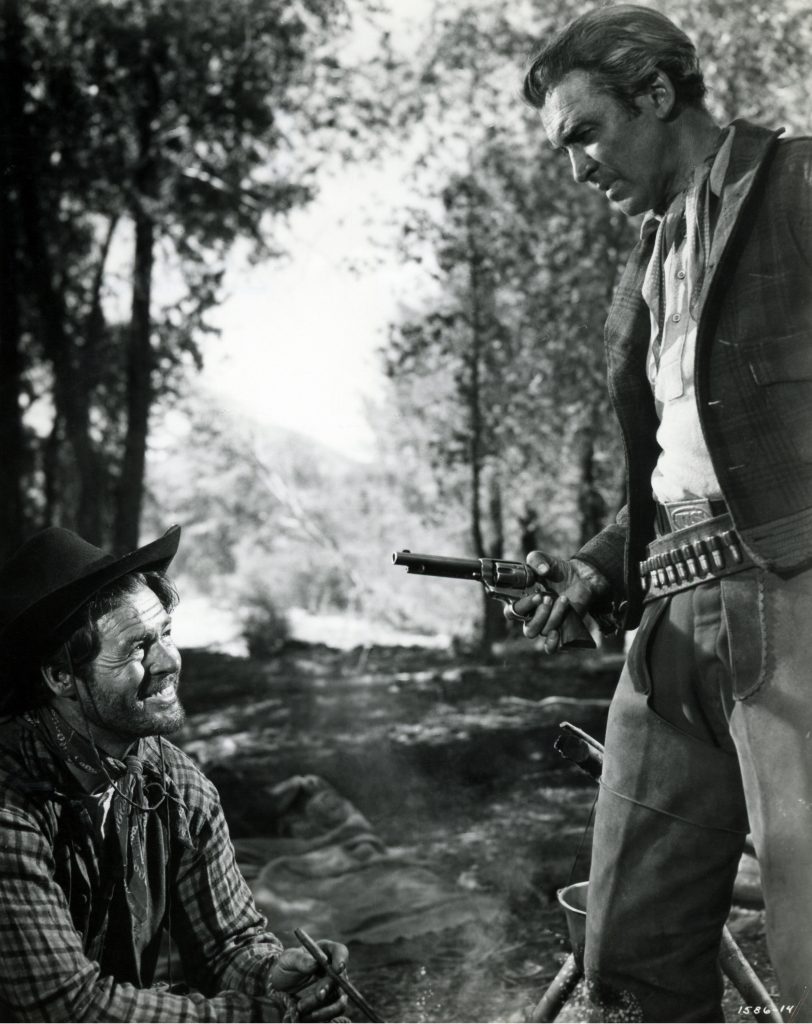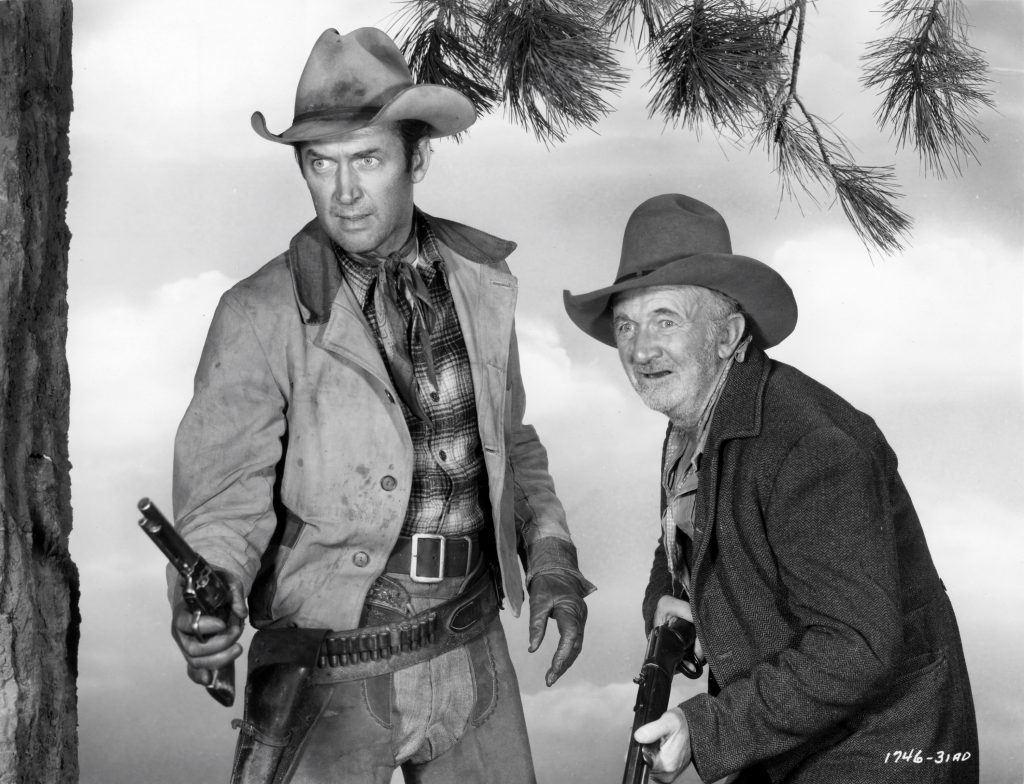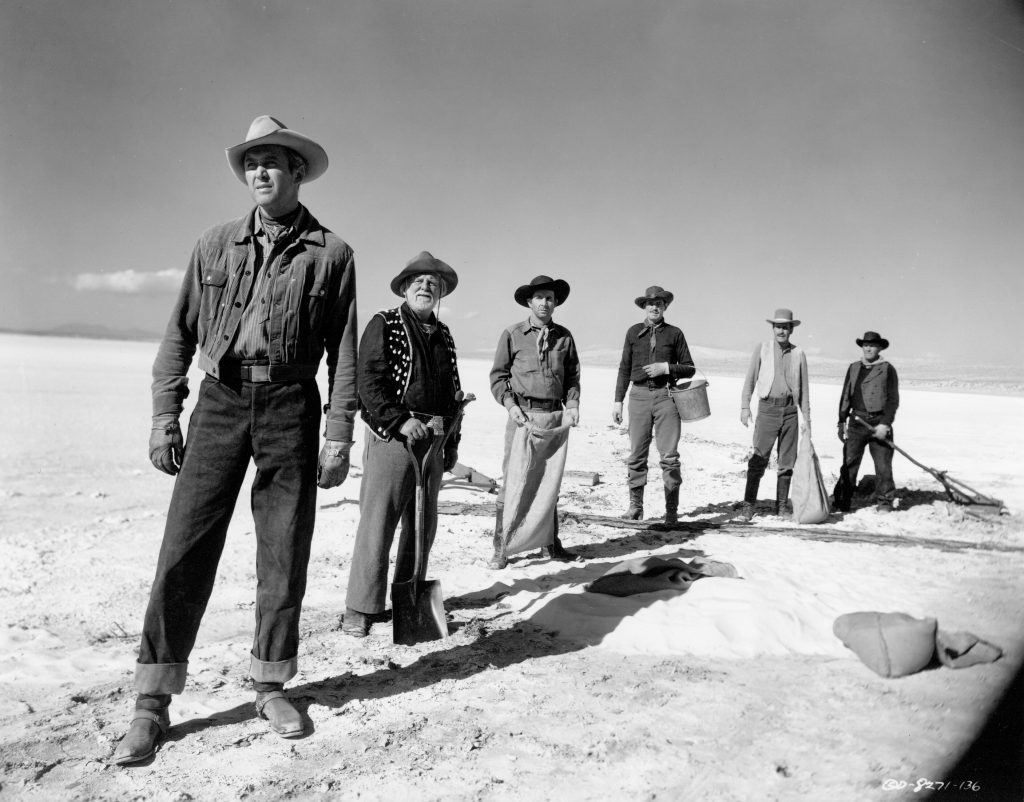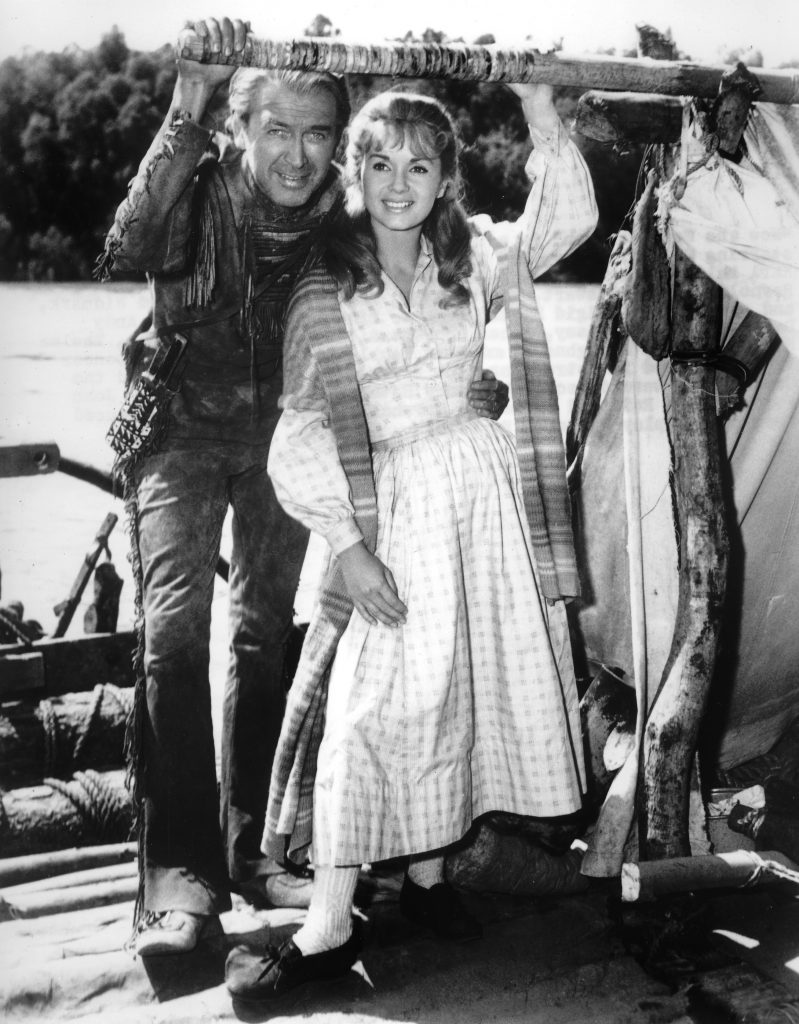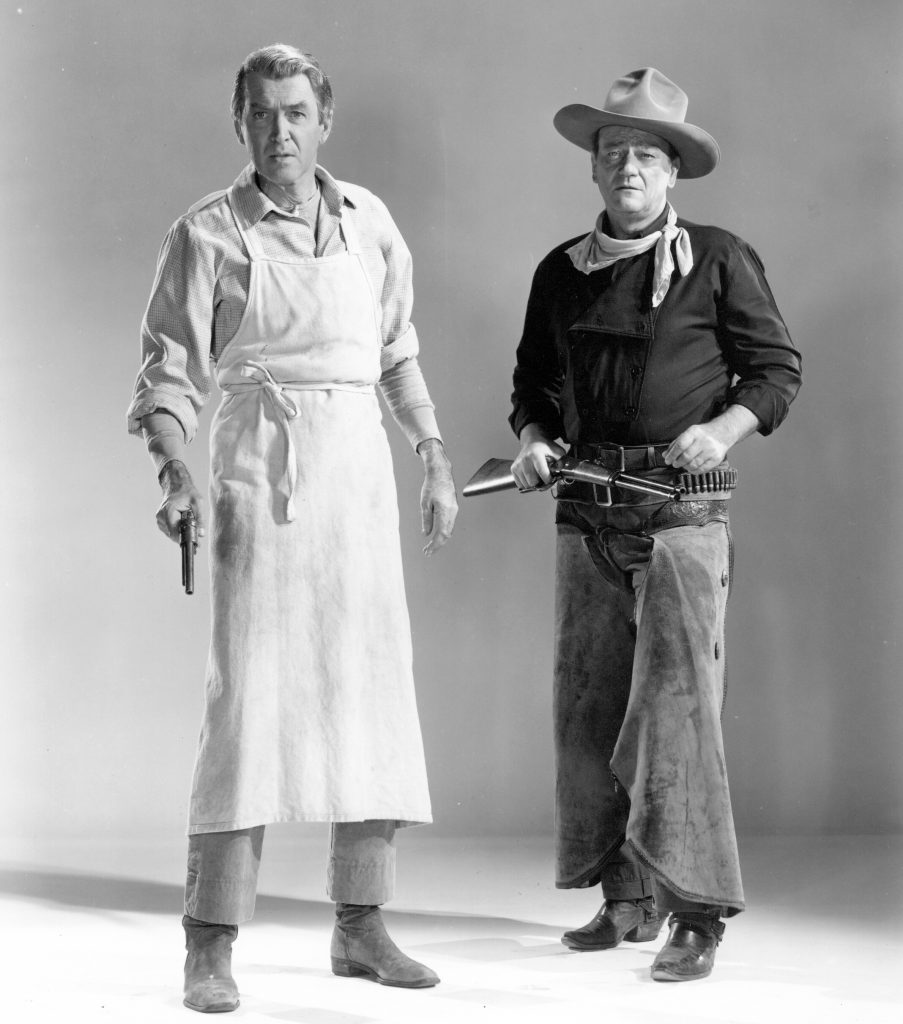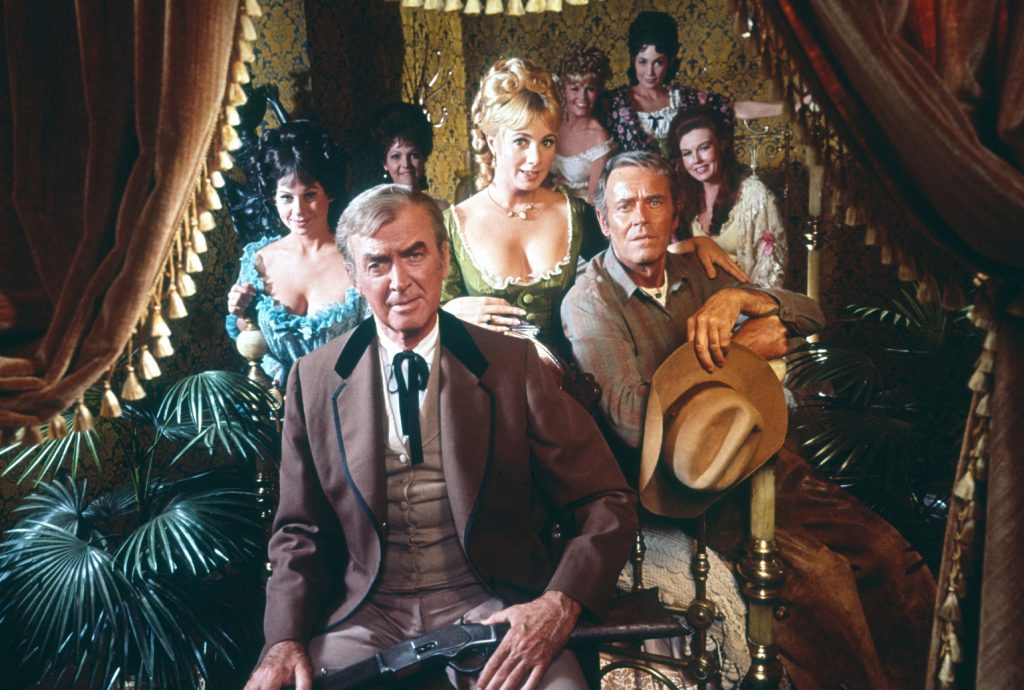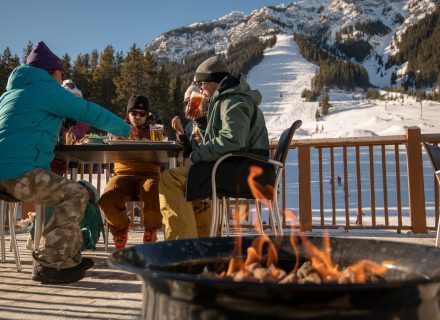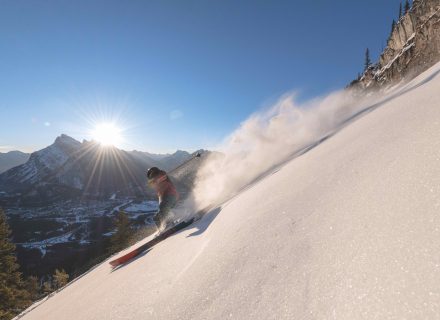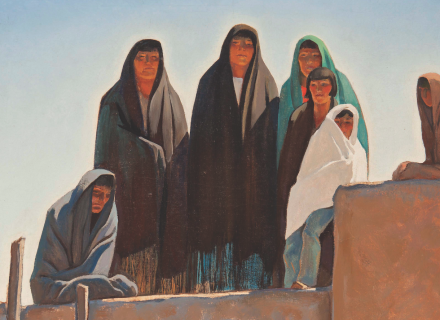While we can all agree that Jimmy Stewart was one of the greats, any “best of” list risks inviting strong disagreement. Nonetheless, here are some of his best westerns for your viewing pleasure.
Destry Rides Again (1939)
The film features Stewart as the lawman son of a famous (deceased) lawman father. The difference is that Tom Destry doesn’t carry a gun. The townsfolk mock him mercilessly, but we’re in on the secret, even if the bad guys are not: Tom is, in fact, an expert with his tucked-away six-shooters, and in the end — after the deaths of his friend and deputy (the lovable Charles Winninger) and Marlene Dietrich’s femme fatale — he’ll strap on those “smoke-wagons,” leaving arch-villain Brian Donlevy much the worse for wear.
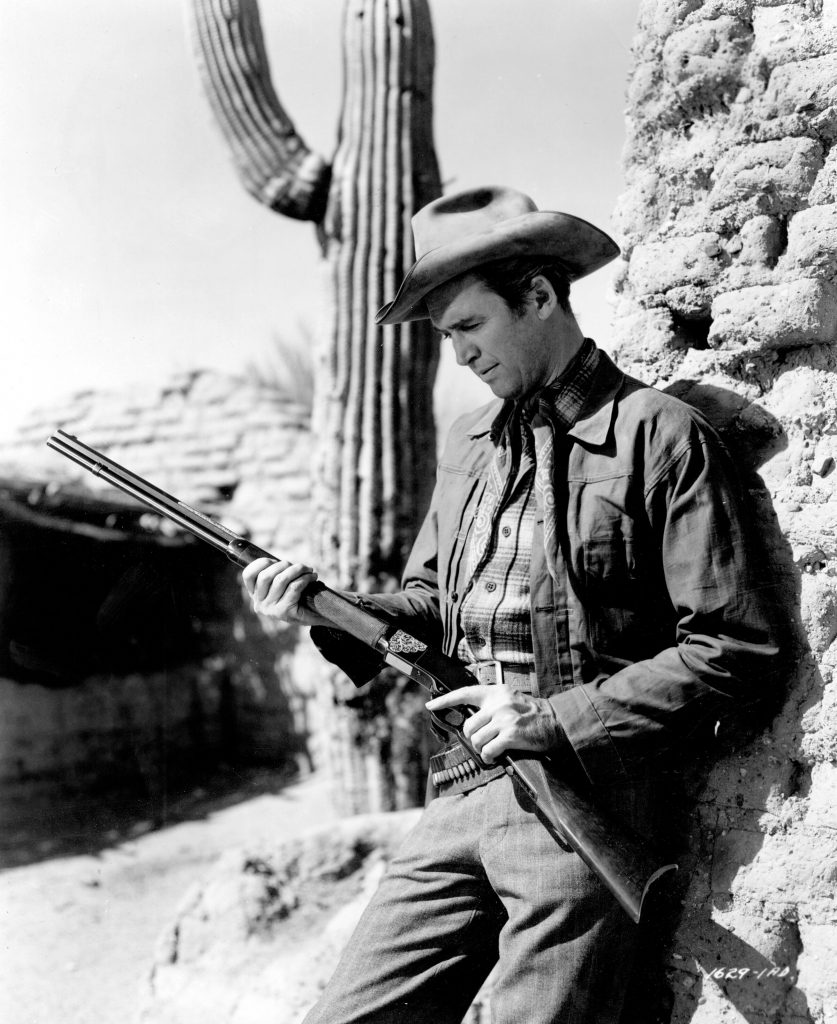
Winchester ’73 (1950)
Marking the first of five oater collaborations with veteran film noir director Anthony Mann [T-Men, Raw Deal], Winchester ’73 boosted Stewart’s sagging post-war career and established him as one of America’s leading western icons. In the film, Stewart is a man obsessed with the deadly pursuit of his own brother for having murdered their father. The titular rifle is the vehicle that connects various classic vignettes (cavalry versus Indians, outlaw-gang bank robbery, crooked trader selling guns to the Sioux) throughout the movie. To prepare for the role, Stewart spent countless hours with noted firearms expert Herb Parsons learning to handle the weapon like a pro. This western gave us an early glimpse of Stewart’s deeper, “revised” characters — driven, often morally conflicted — and it was successful enough to spawn four more.
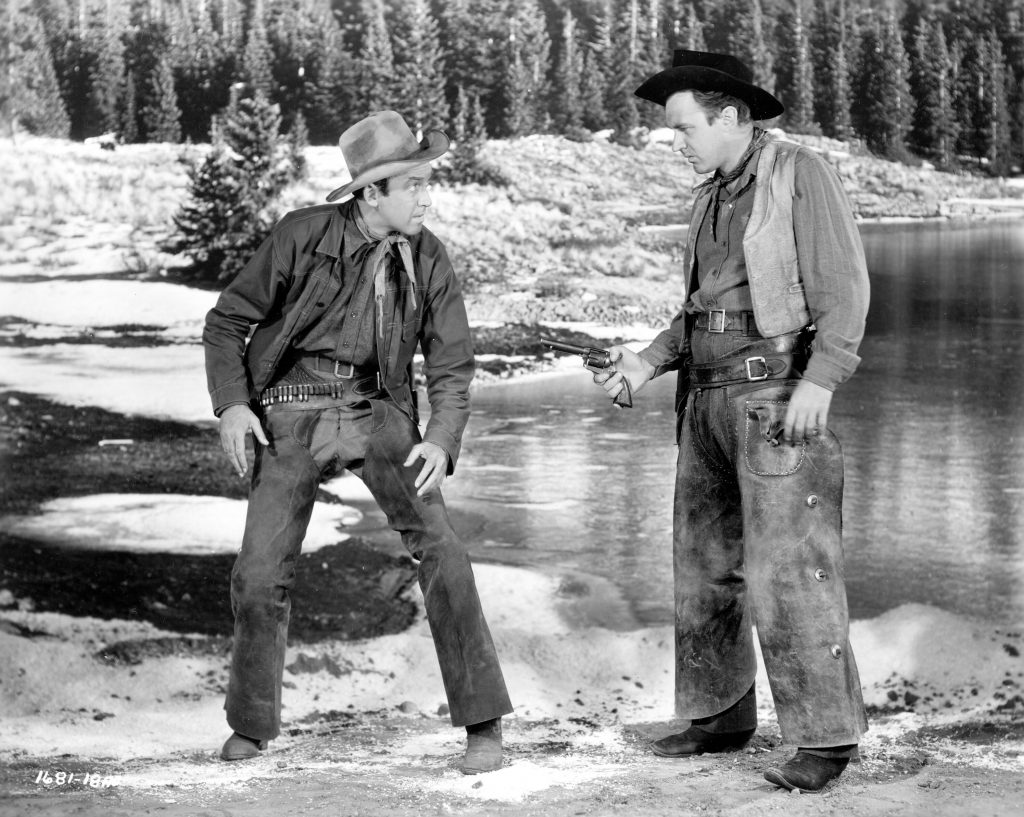
Bend of the River (1952)
In this Anthony Mann vehicle, Stewart plays a former Civil War guerrilla raider looking to put his past behind him. While guiding a wagon train to Oregon, he is forced to contend with felonious teamsters, murderous prospectors, crooked gamblers, and an erstwhile friend whom Stewart saves from hanging but who turns on him for profit. As always, Stewart surmounts all odds, winning the heroine and redeeming his reputation. Arthur Kennedy charmingly portrays the false friend, and the always-reliable scene-stealing character actor Jay C. Flippen, who appears in three of Mann’s five Stewart westerns, plays the wise and forbearing leader of the westering immigrants.
The Naked Spur (1953)
Another Stewart pursuit film. Here, in his portrayal of a bounty hunter determined to capture wanted outlaw Robert Ryan, we see a character whose short temper and monomaniacal dedication to his purpose mask a dark, desperate — and at times, surprisingly weak — character. This is arguably Stewart’s least heroic role and one of his most well-rounded western performances. The Rocky Mountain backdrops enhance the action, and Robert Ryan’s affable but lethal outlaw just adds frosting.
The Far Country (1954)
Playing yet another anti-heroic character, again courtesy of Anthony Mann, Stewart plays a cynical, self-interested Wyoming cowboy who, along with his partner (a predictably perfect Walter Brennan), drives his cattle to the Yukon in order to cash in on the recent gold strike. They nearly lose their herd to villainous mastermind “Judge” Gannon (a reptilian John McIntire) but manage to sell the cattle and buy a claim. He and his partner strike gold, only to be robbed by Gannon’s minions. Brennan is killed, and Stewart desperately wounded. While recovering, he develops a social conscience and aids the oppressed townsfolk in ridding themselves of the judge and his gang. The gritty gunfight at the end is a classic good-versus-evil confrontation. Stewart emerges victorious, with his horse, Pie, playing a crucial role.
The Man From Laramie (1955)
The film, which one critic called a “brilliant psychological western reminiscent of Shakespeare’s King Lear,” was released shortly after The Far Country. This time, Stewart is an Army officer, on leave to look for the man who sold repeating rifles to the Indians, resulting in the death of his kid brother. He runs afoul of the local land baron and his psychopathic son, sustaining a shocking gunshot wound to his hand. Nonetheless, he manages to put an end to the gunrunning operation while winning the heart of the heroine.
How the West Was Won (1962)
The same year Liberty Valance was released, MGM came out with what was arguably the most ambitious and visually stunning western ever made. The epic traced the family of mountain man Linus Rawlings — played by Stewart — from the country’s fur-trapping days, through the Civil War, to the final fight between Linus’s son, ex-lawman George Peppard, and baddie Eli Wallach. Stewart’s Linus — who survives an attack by river pirate Walter Brennan’s band of cutthroats, marries Carroll Baker, and settles down to a farmer’s life, only to die in the Civil War — is a charming, easygoing trapper, until he is wronged. As Brennan’s gang soon discovers, crossing James Stewart is not a healthy thing to do.
The Man Who Shot Liberty Valance (1962)
Looking beyond the fact that he was in his 50s while portraying a young, newly graduated law student, Stewart played a defining role in this classic black-and-white John Ford western. Shot almost entirely on a studio soundstage, it’s the rich story of a nonviolent man’s courage in the face of inveterate evil, personified by Lee Marvin at his nastiest. The film united Stewart and John Wayne for the first time, and he more than held his own in the face of the Duke’s angry, powerful performance. Initially underappreciated, the film is now recognized as one of Ford’s best.
Among the Jimmy Stewart westerns that didn't make the top eight, many are well worth watching.
The Cheyenne Social Club (1970)
In this fun romp (pictured), in which our hero inherits a brothel, aging cowpokes Stewart and Henry Fonda — best friends in real life — play off each other beautifully.
Broken Arrow (1950)
Stewart plays Indian agent Tom Jeffords opposite Jeff Chandler’s Cochise. The fictionalized drama based on the historical figures is considered one of the first major post-war westerns to portray Native Americans sympathetically.
Two Rode Together (1961)
Despite the film’s obvious flaws, Stewart proves he handles questionable morality well as a money-driven lawman whose venality masks a good heart.
Shenandoah (1965)
In this “Civil War western” saga, Stewart handles his difficult role as a Virginia farmer trying to remain neutral in the battle between North and South with a depth that bespeaks his broad range. We share deeply in his losses and triumphs as his family is riven by the conflict.
Bandolero! (1968)
As the semi-honest brother of a bandit leader, Stewart ably shifts from laconic, easygoing drifter to a man you do not want to cross.
The Shootist (1976)
Regrettably appearing in only a couple of scenes in John Wayne’s last film, Stewart believably portrays a tough but sympathetic town doctor.
To check if your favorite film is available to stream or rent online, click here.
For more on Jimmy Stewart
Jimmy Stewart: War Hero, Western Hero
Photography: Courtesy Universal Pictures, Photofest, MGM, Columbia Pictures, MPTV Images, Paramount Pictures, National General
From our April 2020 issue.



